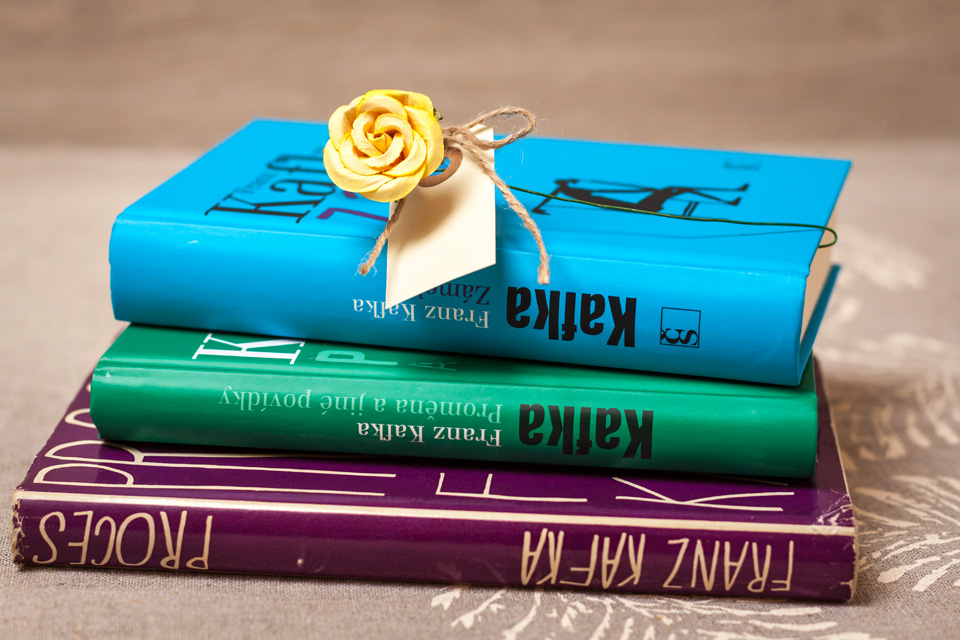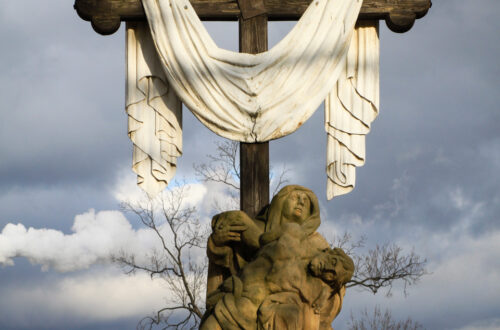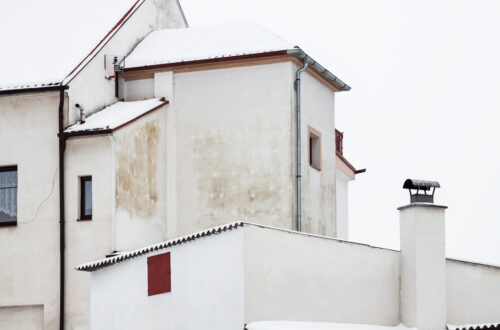Some things are simply meant to be
The other day my husband and I were shopping in a Tesco hypermarket in Pilsen. Inside the building, there were presented several large boards promoting books to be published, each side of the boards was devoted to a single book. There was always a paragraph or two presenting the book and its author but what especially attracted my attention were images of the book’s covers along with their drafts and other versions, it’s something one rarely has the opportunity to see. Who could resist having a look behind the scene?
Several of the promoted books were written by Franz Kafka, a writer coming from a Jewish family who was writing in German and lived in Prague at the turn of 19th and 20th century. He’s famous nowadays but his life must have been really troubled. It is interesting that much of his work was published after his death despite his wishes for it to be destroyed.
I hadn’t read any of his books before and the boards in the shopping centre made me think about buying one, preferably “The Castle”. I was speaking about the boards and about Kafka with my husband, who found them interesting as well, and so it happened that a few weeks ago he came home and presented me with… “The Castle”.
Nevertheless, before I was able to grab the book and start reading it, my husband told me that Kafka had just been mentioned in the autobiography he was reading. The author of the autobiography remarked that he regretted he didn’t start reading Kafka from his world-famous and most appreciated story “The Metamorphosis” for better understanding of his work.
Now what? Which Kafka’s book should I read first? The one I was looking forward to or the one that sounded horrible but was recommended by someone who had some experience with Kafka’s work?
After some hesitant pondering I decided to read “The Metamorphosis” first, “The Castle” could wait. Coincidentally I had the novella downloaded in my laptop in its English translation so I waited for nothing and started reading. After all, it’s just a short story…
Have you read the story? It’s no secret that it starts with the metamorphosis of a travelling salesman who wakes up in the morning and finds out he has been transformed into a huge vermin. An absurd beginning and perhaps even more absurd plot. It felt repulsive.
Well, I know. It’s a highly regarded book. But when I got to its final words, I didn’t know what to say, what to feel, what to think about it. It felt truly revolting. Yet I wanted to get to the bottom of its success so I started looking for reviews and analyses on the Internet and got totally absorbed in all the explanations, theories and hypotheses. Some of them being insightful, some contradicting one another, some confidentially claiming points that I absolutely couldn’t agree with. My mind was spinning, fed with all the (un)believable information that introduced me into the value of the short story.
Sometimes we look but don’t see, listen but don’t hear, touch but don’t feel, but there are others who can help us direct our senses. I’ve learned that if you want to understand Kafka’s work, you need to know as much as possible about his personality and his life, his feelings and his reasons, his soul and his psyche. It’s the starting point. Then you need to be able to recognize and decipher symbols he employed in his work. Some are obvious and understandable. Other are obvious but you have no clue what they are linked to. And some you don’t even notice.
For example, in the salesman’s room, there is a picture hanging on the wall and the picture obviously has some meaning. It’s not difficult to see that. It might also be quite obvious that certain scene involving the picture might have a sexual subtext. But what you might not guess would be the possible relation of the sexual subtext to Kafka himself and also the possible link between the contents of the picture and a particular book which would add a new meaning to the sexual subtext and would point at the main character’s or even Kafka’s own sexual preferences. All of it in the historical context.
They say that Kafka is so famous and his work so timeless because so many theories can be applied to his stories. There are no definite conclusions about the symbols he used, they may point both at his personal and utterly general issues. Was he so clever or do we see more in his ideas than he put there? Who knows. But either way, the work he created is remarkable. I’m happy I followed the advice, started with this particular book and got to know about it as much as I could. I’ll definitely read “The Castle” with much better attitude.
Sometimes one thing leads to another and coincidence influences our lives in ways we wouldn’t or rather couldn’t have expected. I had no intention of reading Kafka before going shopping to the hypermarket even though I downloaded “The Metamorphosis” ages ago, and isn’t it interesting that Kafka was mentioned in the other book which my husband was just reading? Some things are simply meant to be.







